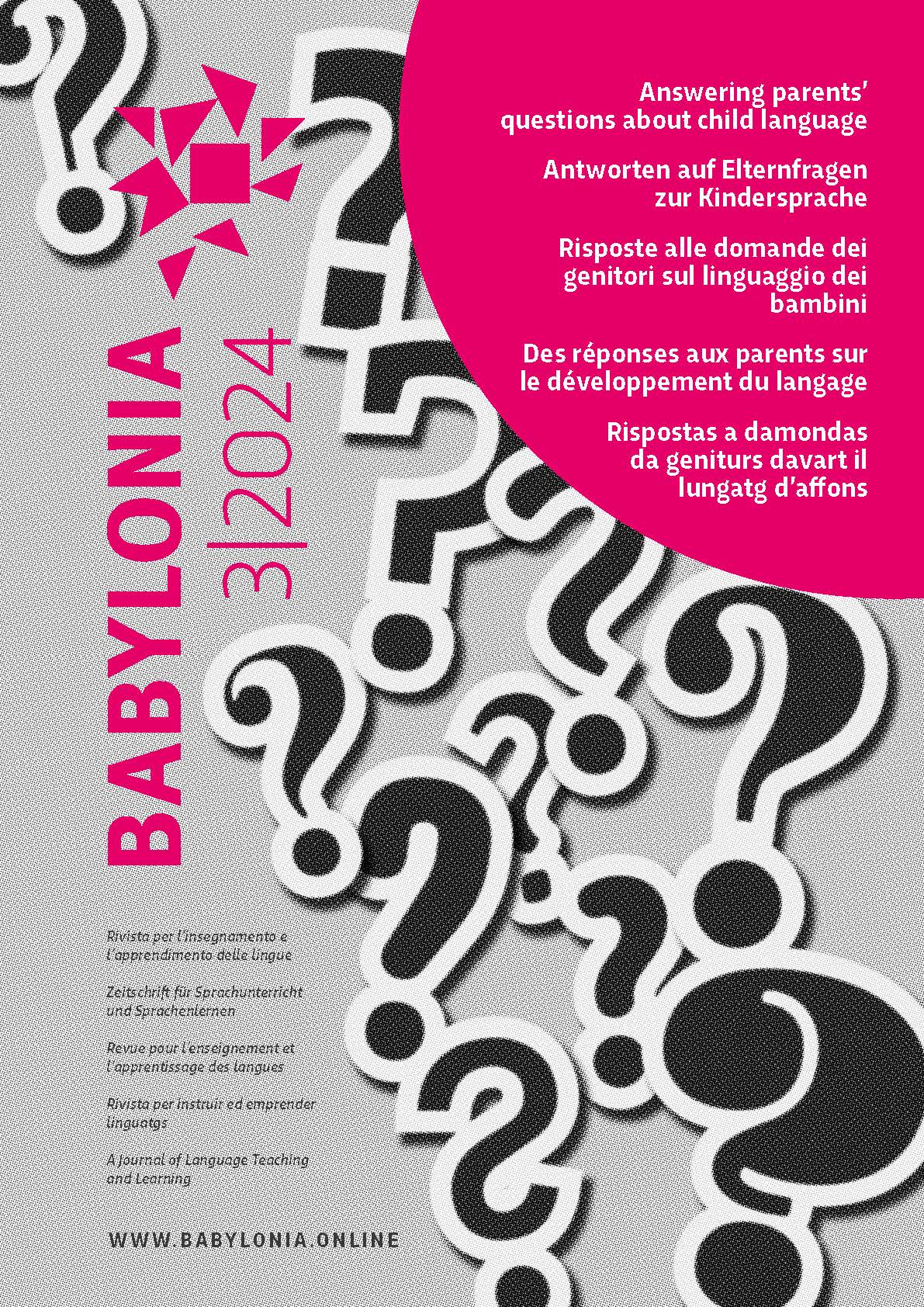The pursuit of literacy in two languages at the same time
DOI:
https://doi.org/10.55393/babylonia.v3i.411Keywords:
biliteracy, home language, reading, writing, bilingual children, literacy practicesAbstract
Between September and December 2023, Babylonia collected questions from parents regarding their children's language development. This article aims to answer the following question:
We are a multilingual home (Spanish; German) and would like our children to learn to read and write in both languages. My 6-year-old son is learning to read and write in German in school. Is it advisable for my child to start learning to read in Spanish only once he has learned to do so in German? Or is it feasible to pursue his literacy in both languages at the same time?
[Summary generated by Claude-3-Haiku-200k - we refer the reader to the full article in PDF format for a complete response]
This article addresses the question of learning literacy in two languages simultaneously, in response to the concerns of parents raising their children in a multilingual home.
Although literacy is often associated with formal education in reading and writing, it is rooted in family language practices. Children who are bilingual from birth (BFLA) are already on the path to bi-literacy through their daily interactions with their parents.
Several arguments support the idea that simultaneous learning of literacy in both languages is not harmful to the child:
-
Young bilingual children show early understanding of written language in both of their languages.
-
Language learning and literacy are interconnected, with potential transfers from one language to another (e.g., phonological awareness, vocabulary).
-
Literacy practices in the non-school language help to maintain and develop it within the family.
-
These practices contribute to building a bicultural identity in the bilingual child.
-
It is easier to teach the non-school language during early childhood before the child becomes overwhelmed by school activities.
Although this requires significant effort from parents, learning bi-literacy is beneficial for the language and identity development of the bilingual child. Parents can support each other, particularly through weekend schools, to meet this challenge.
In conclusion, simultaneous learning of literacy in both languages is not only feasible but desirable to promote bilingualism and biculturalism in the child.
Downloads
Published
How to Cite
Issue
Section
License
Copyright (c) 2024 Janice Nakamura

This work is licensed under a Creative Commons Attribution 4.0 International License.






